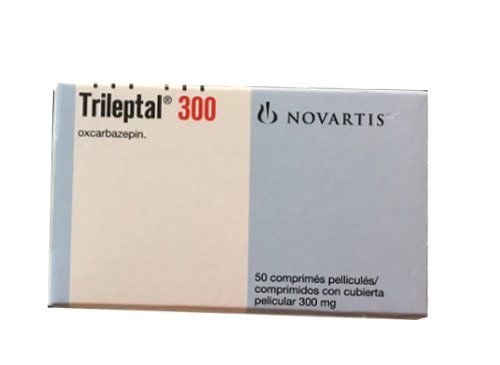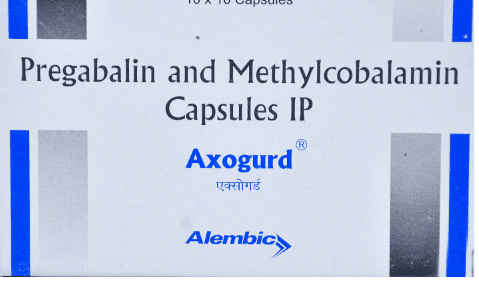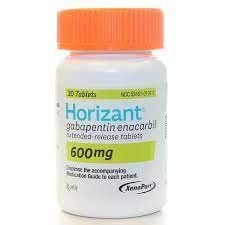This is an automatically translated article.
Gabantin is used in the treatment of neuropathic pain in adults, as monotherapy or as adjunctive therapy for partial seizures with or without secondary generalization in patients over 12 years of age. This is a prescription drug, so it is important to use it as directed by your doctor.1. What is Gabantin 300?
Gabantin 300 belongs to the group of antiepileptic drugs, the main ingredient is Gabapentin. Gabantin 300 is available in capsule form.
Indications of Gabantin 300:
Monotherapy or adjuvant treatment of partial seizures, with or without recurrent generalized seizures. Treatment of neuropathic pain such as inflammation of the peripheral nerves after shingles, neuralgia in diabetes. Contraindications of the drug Gabantin 300:
Hypersensitivity or allergy to Gabapentin, any ingredient of the drug. Children under 3 years old.
2. How to take Gabatin 300
2.1. How to take Gabatin 300 Gabantin 300 is used orally, the time of taking the drug does not depend on the meal. Dose reduction, discontinuation, or replacement of Gabantin with another antiepileptic drug should be done gradually for at least 1 week and under the guidance of a physician.
2.2. Dosage of medicine Gabatin 300 Treatment of neuropathic pain (only used for adults):
First day: Dose 300 mg x 1 time/day; Day 2: 300 mg/time x 2 times/day; Day 3: 300 mg/time x 3 times/day. Or can be used on the first day: 300 mg / time x 3 times. After that, the dose can be increased by 300mg (divided equally among 3 times a day). The dose is increased every 2-3 days based on the patient's response until an effective therapeutic dose is reached, the maximum dose used in a day is 3600 mg.
Treatment of epilepsy:
Adults and children over 12 years old: First day: 300 mg x 1 time / day. Day 2: 300 mg/time x 2 times/day. Day 4: 300 mg/time x 3 times/day. Or can be used on the first day: 300 mg / time x 3 times. After that, the dose can be increased by 300mg (divided equally among 3 times a day). The dose is increased 1 time every 2-3 days based on the patient's response until an effective therapeutic dose is achieved.
The maximum dose when using Gabantin to treat epilepsy is 4800mg/day, usually 900-3600mg/day. The interval between doses should not exceed a maximum of 12 hours.
Patients with impaired renal function, on hemodialysis need to adjust the dose according to the glomerular filtration rate. Patients with renal failure should not take the drug on non-dialysis days. Patients under 12 years of age with renal impairment should not be given the drug due to lack of adequate studies.
Children 6 - 12 years old: First day: 10 mg/kg (maximum 300 mg) x 1 time/day. Day 2: Dose of 10 mg/kg (maximum 300 mg) x 2 times/day. Day 3: Dose of 10 mg/kg (maximum 300 mg) x 3 times/day. Usual dose: 25-35 mg/kg/day, divided into 3 times/day. Maintenance dose: children 26-36kg: 900mg/day; Children from 37-50kg: 1200mg/day, this total dose is divided into 3 times a day. Maximum dose: 70 mg/kg/day, divided into 3 times/day.
Children 2 - under 6 years old: First day: Dose 10 mg/kg x 1 time/day. Day 2: Dose 10 mg/kg x 2 times/day. Day 3: Dose 10 mg/kg x 3 times/day. The dose is gradually increased depending on the patient's response, the usual dose is 30 - 70 mg/kg/day in 3 divided doses.
Some children are not able to tolerate medication if daily increments, it may be more appropriate to prolong the dose interval (in weeks).
2.3. Overdose and management Gabantin overdose symptoms include: Coma, double vision, slurred speech and diarrhea.
Most symptoms are reversible with supportive treatment. The drug can be eliminated from the body by hemodialysis, this method depends on the clinical condition or the patient with severe renal impairment.
3. Precautions when using Gabantin 300 When using Gabantin 300, caution should be taken in the following cases:
Caution should be taken when using Gabantin 300 in patients who are or are starting anticonvulsant therapy. . Close monitoring is required because depression or aggravation may occur, suicidal thoughts, or mood changes. Always consult your doctor about the treatment regimen, do not change the medication on your own. If gabapentin is discontinued or replaced with another antiepileptic drug, this should be done gradually over at least 1 week. In patients with hepatic impairment, the drug may increase the risk of moderate to severe liver dysfunction. Use caution when using the drug in people with a history of liver disease, drinking a lot of alcohol. Gabantin should not be stopped abruptly because of the potential for increased seizures. Discontinuation or addition of medication to existing therapy should be done gradually over at least 1 week. Gabatin should be used with caution in patients with a history of psychosis. Pay attention to dose adjustment in patients with renal failure, hemodialysis. Because Gabantin can cause side effects such as dizziness, drowsiness and other related symptoms, especially when starting to use and increasing the dose of the drug. Caution should be exercised when driving, operating machinery or doing anything requiring alertness. The main active ingredient of the drug, Gabapentin, can cause false-positive proteinuria test results. Patients who are taking morphine concurrently, may increase the concentration of gabapentin in the blood. Monitor for signs of CNS depression to adjust therapeutic dose accordingly. Pregnancy: Studies have shown that Gabapentin is teratogenic in rodents. Use in pregnant women only when absolutely necessary, fully weighing the risks and benefits to the fetus. Gabantin is excreted in breast milk. Breastfed infants may be absorbed at doses up to 1 mg/kg/day. Use in lactating women only when clearly needed and carefully weigh the benefits above the risks.
4. Undesirable effects of Gabantin 300Mg
Gabantin is generally well tolerated. Mild and moderate adverse events tended to subside within 2 weeks of continued treatment. The most common side effect of the nervous system and often the cause of discontinuation of the drug.
Nervous: Fatigue, dizziness, drowsiness, memory loss, loss of coordination, nystagmus. Children between the ages of 3 and 12 may experience anxiety and behavioral changes (hostility, overstimulation, fussiness, feelings of euphoria or depression, etc.). Gastrointestinal: Abdominal pain, diarrhea, constipation, indigestion, dry mouth. Cardiovascular: Peripheral edema, vasodilation. Hypotension, angina pectoris, palpitations, peripheral vascular disorders. Respiratory: Rhinitis, pharyngitis, otitis media, bronchitis, pneumonia. Less common such as cough, hoarseness, pulmonary edema. Eyes: Double vision, conjunctivitis, decreased visual acuity. Eye itching, lacrimation, iritis, retinopathy may occur. Musculoskeletal: Myalgia, muscle twitching, fracture, tremor. Blood: Leukopenia. Some other side effects: Weight gain, impotence, enlarged liver.
5. Drug interactions
Other antiepileptic drugs such as Carbamazepine, Diazepam, Phenytoin, Valproic Acid, Phenobarbital when used concurrently with Gabantin drugs do not change the pharmacokinetics of these drugs.
Antacids containing aluminum and magnesium affect the absorption of the drug, reducing the bioavailability of Gabantin by about 20%. It should be taken at least 2 hours after the antacid.
Morphine used concurrently with Gabantin may reduce the clearance of the drug. Monitor for symptoms of CNS depression and adjust dose. Cimetidine reduces the renal clearance of gabapentin.
Gabantin 300 belongs to the class of antiepileptic drugs. To ensure the effectiveness of use, users need to carefully read the instructions and consult a doctor, professional pharmacist.
Please dial HOTLINE for more information or register for an appointment HERE. Download MyVinmec app to make appointments faster and to manage your bookings easily.













